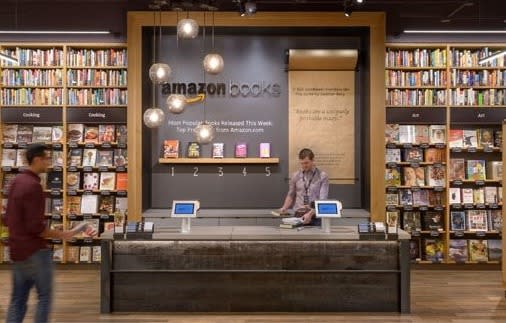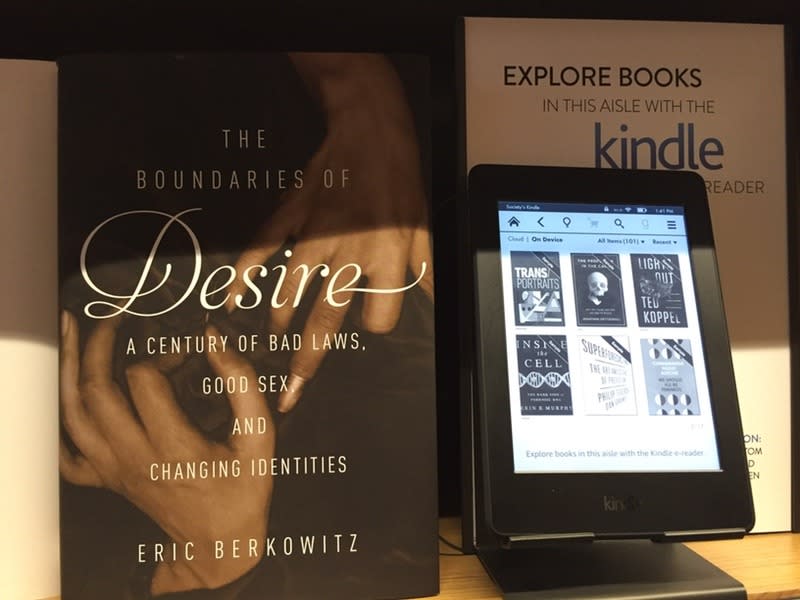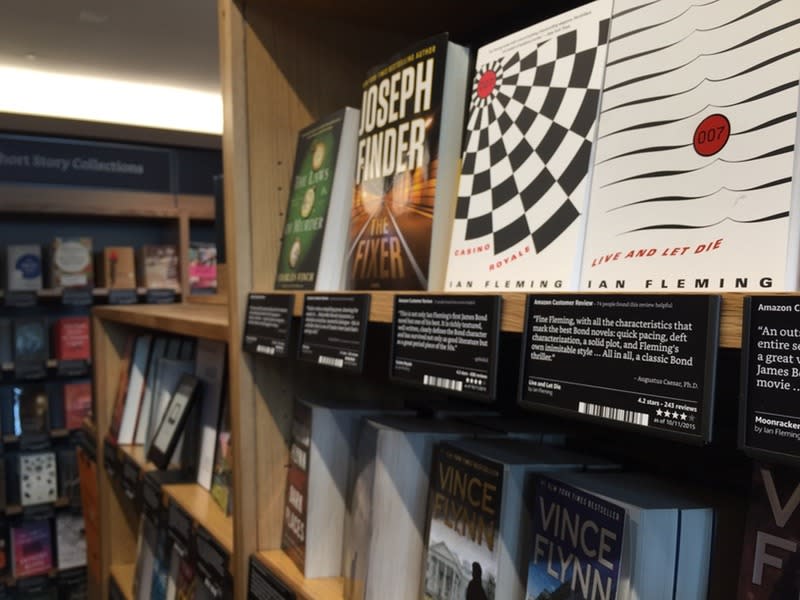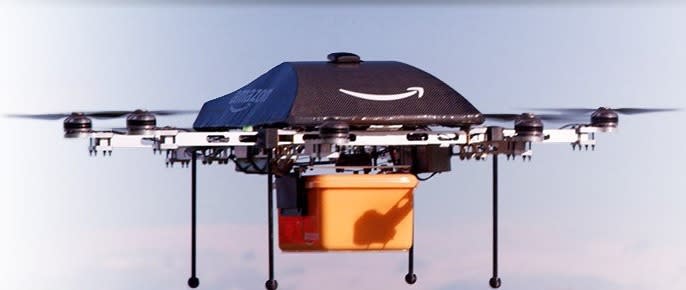The Short Tail: Browsing Amazon’s First Brick-and-Mortar Bookshop

(Photo: Amazon)
My first thought on hearing that Amazon was opening a physical bookstore near me in Seattle was wondering what it might stock. Finely-tooled leather volumes of the complete Wikipedia, perhaps? A coffee-table atlas of the Internet from Google? Or maybe just glossy magazines full of Airbnb and Tinder listings?
You can’t fit a website into a book, of course, nor the Internet into 7500 square feet of retail space in the swanky University Village mall. The reality is that Amazon Books, as the store is called, risks being little more than a museum of the way we once shopped.
Just like a real bookstore
The danger signs are there. From its industrial seating and classical Muzak to the towering wooden shelves and literary quotes on the walls, the elegantly minimal interior could be a movie set for a generic bookshop.
Every title is shelved face-out, like a picture in a gallery. Under each is an interpretive card with the Amazon.com customer rating, a short review by a named customer, and a barcode. If that sounds too intensely analog for you, many shelves have Kindle e-readers displaying excerpts, so you don’t actually have to touch any paper at all.

If you’d really rather not touch that icky paper stuff. (Photo: Mark Harris)
The choice of books also contributes to the nostalgic atmosphere. There are few of the seasonal offerings or featured new releases you’ll see in a traditional brick-and-mortar bookstore (assuming you can still find one). Instead, the focus is on “Best of” lists that blend classics with a sprinkling of contemporary titles.
The thriller section, for example, showcases Ian Fleming’s first Bond adventure, Casino Royale, rather than anything Spectre-related. This is because most of the books in the store are selected on the basis of their online ratings — a process that naturally benefits older favorites over anything new or edgy.
You need those barcodes, because nothing in the shop has a price tag: ‘Showrooming’ (browsing online to compare prices) is positively encouraged. You either scan one of those barcodes with a smartphone app or run a book by one of the physical scanners situated at the end of each aisle.
What’s really on sale
Everything is discounted to match Amazon’s online prices, but there are still some bargains to be found, such as a $10 discount on the $99 Prime membership fee. In fact, the only full-price items I can find are on the rack of newspapers and magazines.
“Amazon Answers”, the company’s version of Apple’s Genius Bar, is staffed by a trio of associates clearly well-versed in Amazon’s own tablets, e-readers, and smart home devices, all of which are available to play with. (No sign, though, of the ill-fated Fire phone). I particularly enjoyed hearing an elderly couple marvel at Echo’s speech recognition; they seemed less thrilled about her grating computer voice when she replied.

Bar codes, but no price tags. (Photo: Mark Harris)
Gadgets aside, Amazon has gone out of its way not to try anything too revolutionary in its first store. Staff couldn’t direct me to any books from the dozen or so digital imprints that Amazon publishes itself, and you can’t print books on demand as you can at rival Seattle stores equipped with the Espresso machine. Nor can you mix bricks-and-clicks services, such as buying a book at the store then having it delivered by Amazon to your home or as a gift.
That doesn’t seem to bother the enthusiastic opening-week crowd, who are oohing and ahhing over the shop as if Barnes and Noble had never existed. Some of that is probably down to novelty. But there is still a long line at the checkouts, with most people buying multiple books. When it’s my turn, I swipe my credit card, and the terminal instantly notes that it’s linked to an existing Amazon account. I receive an email receipt before I’ve even left the shop.
Loss leader
Amazon Books is clearly not a serious attempt to reinvent retail. The combination of gorgeous interior design, a prime location in an upmarket mall and bargain basement prices means that Jeff Bezos is likely losing money on every book he sells there.

Serious service or marketing tool? (Photo: Amazon)
But if you think of Amazon Books not as a shop but as a marketing device, it suddenly makes sense. Like the Prime Air delivery drones announced at Thanksgiving two years ago, it can surely be no coincidence that Amazon Books is opening its doors just as the manic holiday buying season is ramping up. The global publicity generated by Amazon opening a physical outlet (including this very story) is worth far more than the few hundred thousand dollars the shop itself probably cost to open.
The only question is whether Amazon Books will be successful enough to spawn imitators. I can’t wait to visit my local Twitter café, YouTube multiplex, and eBay yard sale.
Mark Harris is an award-winning science and technology journalist based in Seattle. He writes regularly for The Economist, The Guardian, and IEEE Spectrum.

